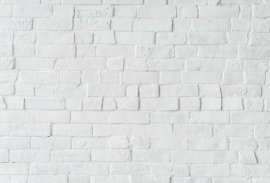
With so many options to choose from, many people are asking: ‘what is the best masonry paint?’ Painting exterior walls is not a job to take lightly; it’s important to not only choose masonry paint that looks amazing, but one that will protect the stone or brick surface for years to come.
Don’t worry, we’re here to help. We’ll explain the purpose of masonry paint, which type is right for you, and how to apply it for the best finish.
Key Takeaways
- Masonry paint is designed for stone and brick surfaces, including walls, paths, and even interior surfaces.
- There are two types of masonry paint – textured and smooth.
- Choose the colour of your masonry paint wisely – it won’t always look the same shade.
- Follow our guide to get the most out of your masonry paint.
What is Masonry Paint?
Exterior walls, either made of brick or stone, need specialist paint that is resistant to wind, rain, and frost. The naturally porous stone surface helps paint and primer to cling to it, creating a barrier against damp. The best masonry paints can even help to insulate your home, which is useful when Winter is just around the corner!
However, some masonry paints seal the surface too well. If no air and moisture can escape, it builds up below the painted surface and eats away at walls or wherever else you apply your masonry paint. So for the perfect results, you need masonry paint with a blend of durability and breathability.
Types of Masonry Paint
Masonry paints are all acrylic based but come in two distinct types.
Textured masonry paint is a classic choice for exterior walls and paths, as it reflects the natural texture of stone shine through, instead of covering it up. It’s also perfect for covering up cracks, blemishes and more in the surface – making it ideal for older buildings and walls that are impacted more by bad weather.
On the other hand, smooth masonry paint is becoming more and more popular, and we can see why. It creates a sleek, modern finish and is easier to apply if you’re new to exterior painting. It will only make any imperfections stand out more but fixing them isn’t too much trouble if you have the time and tools to do it properly.
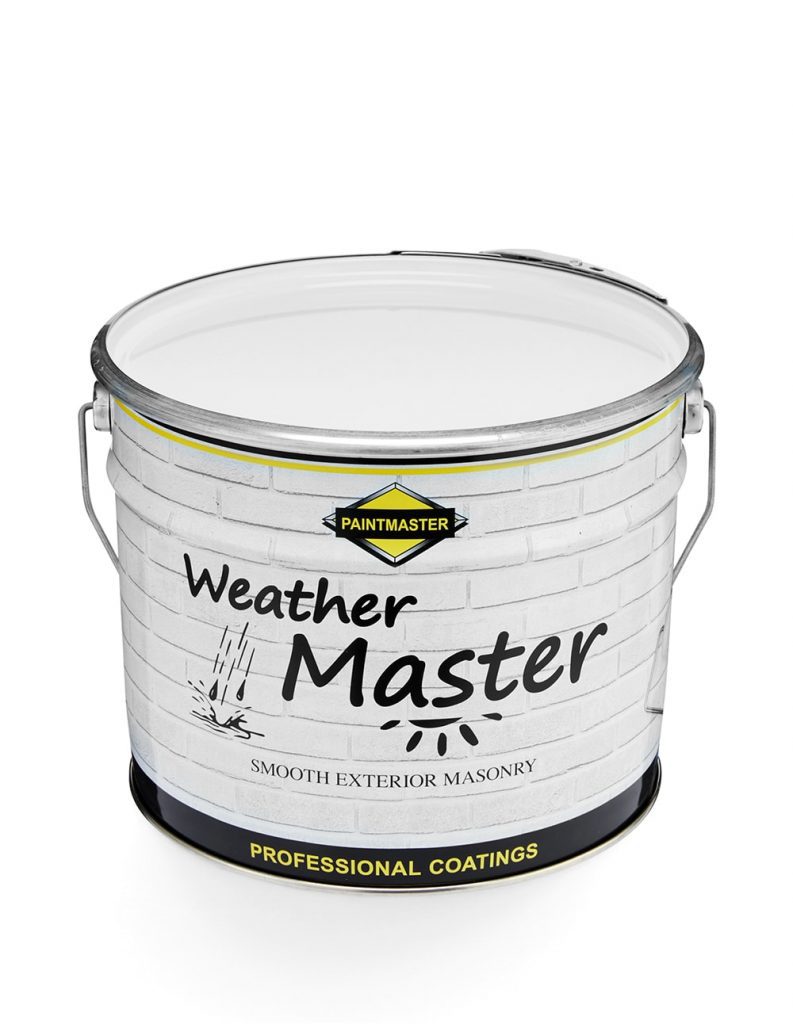
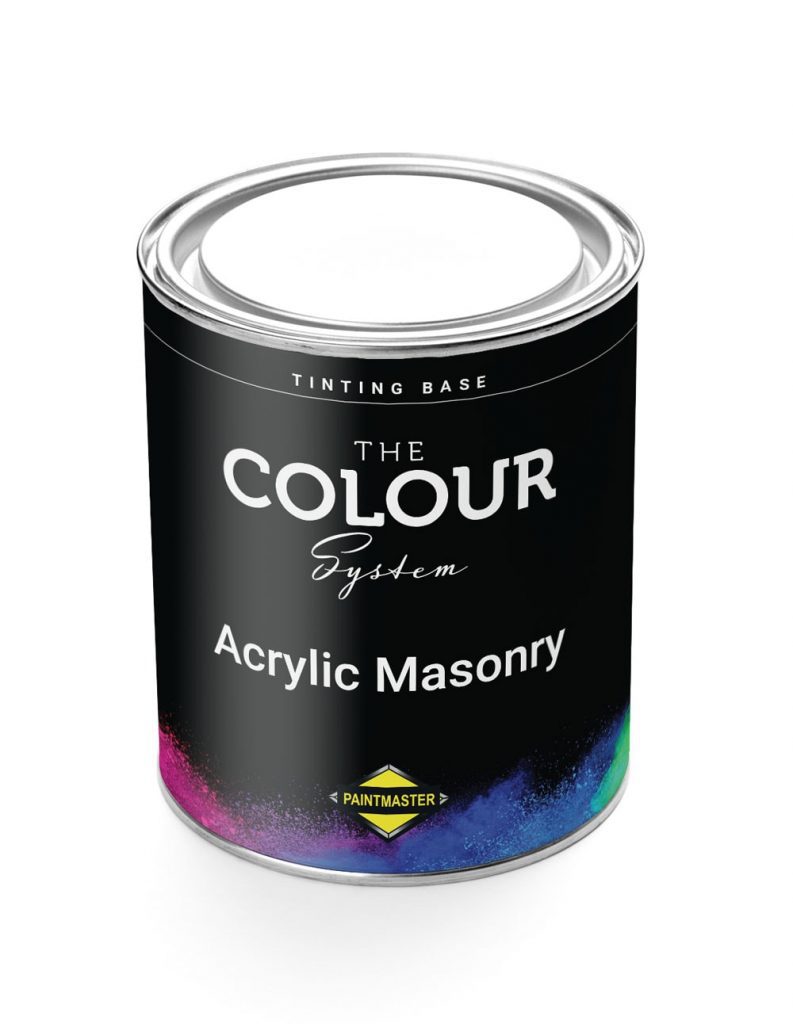
The Best Masonry Paint
Our Weathermaster masonry paint doesn’t just give you a great finish for your walls and concrete. It’s a premium acrylic resin solution that is much more durable than other ‘off-the-shelf’ masonry paints, but still allows the surface to breathe.
But that’s not all! Weathermaster is UVA fade-resistant and contains a fungicide to inhibit mould and algae growth on the paint film which helps it stay cleaner for longer.
Painting exterior masonry is a tricky job, one that takes a while even for professionals. Using a product that is hardwearing and easy to maintain will keep them looking great for years. Our masonry paints and primers are available in 1l- 205l too; no job is too big if you choose Paintmaster.
Best Masonry Paint Colours
As with any of our painting projects, getting the colour just right is the biggest challenge. If you’re painting the outside walls of your home, a garden path, or even a stone wall, choosing the perfect shade to maximise kerb appeal is essential – first impressions matter after all!
When picking your colour, you should keep in mind how it will look at certain times of day and during different seasons. Even on clear days you’ll have often unique levels of sunlight and varied shadows. Too dark and it’ll look gloomy when the weather is dull, too light and it could be dazzling or show dirt and grime clearly from a distance.
Before you commit to the full painting job, we recommend testing your chosen colour on an inconspicuous area first, one that sees a lot of different light levels during the day. This isn’t just for exterior painting jobs either, any surface you paint indoors should be tested in a similar way so you’re sure how it’ll look when a full layer is applied.
If choosing the perfect colour sounds daunting, here are some of the most popular colours for masonry paint:
- White Masonry Paint
- Light Grey Masonry Paint
- Mid Grey Masonry Paint
- Dark Grey Masonry Paint
- Buttermilk Masonry Paint
- Classic Cream Masonry Paint
- Cornish Cream Masonry Paint
- Country Cream Masonry Paint
- County Cream Masonry Paint
- Gardenia Masonry Paint
- Jasmine White Masonry Paint
- Magnolia Masonry Paint
- Rustic Red Masonry Paint
- Mid Green Masonry Paint
- Dark Green Masonry Paint
- Black Masonry Paint
If none of these shades are for you, don’t click away! Our innovative Colour System allows you to create any colour you can imagine. Simply enter the British Standard or RAL code at checkout and we’ll mix the perfect colour for your next paint order.
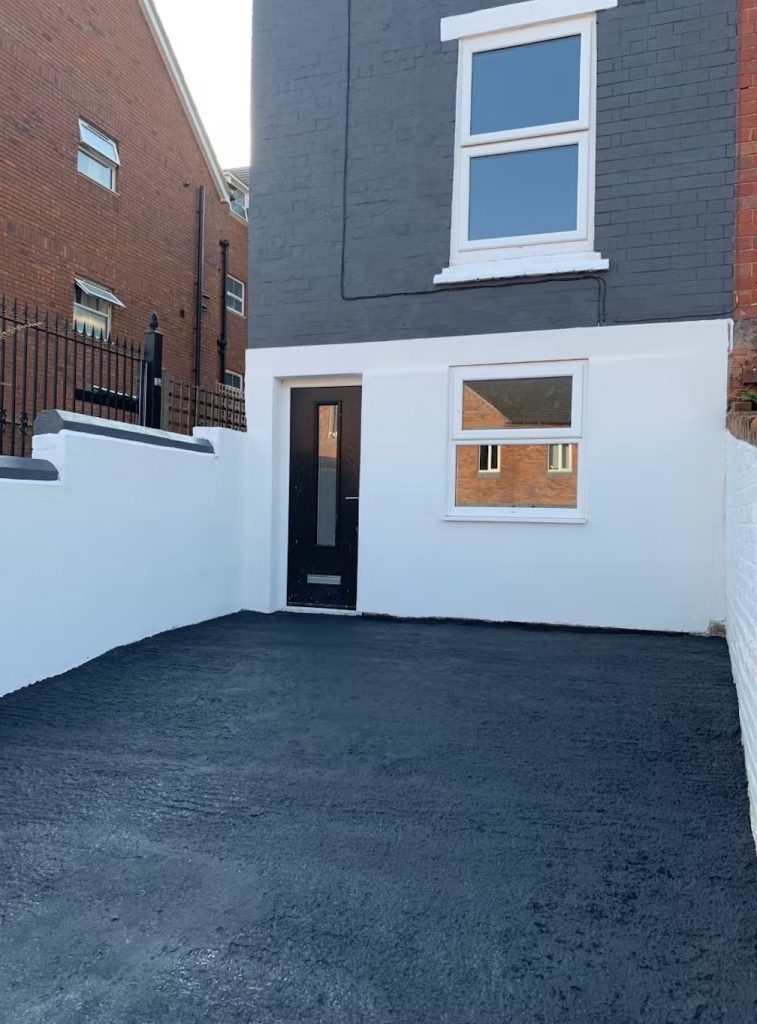
How to Remove Masonry Paint
If your stone surfaces have been previously painted, and are now looking worse for wear, or if you just fancy a change, you need to remove the previous layer completely before adding a fresh one. This is because if you simply paint on top of flaking or worn masonry paint, it won’t bond to the stone or the way it’s meant to, ruining both the overall finish and the preservation of the stone itself.
To remove masonry paint from bricks or stone, you need to use a specially designed paint stripper that will detach the paint layers from the surface. Then you can scrape it away easily. It’s a job that requires a bit of elbow grease, but it’s worth the effort.
Once your masonry is ready for painting, read on to find out how to get the results you need.
How to Use Paint Masonry – Masonry Painting Guide
Once your paint order arrives, it’s time to paint your masonry. If you’re not a keen painter, this can be a tense moment, but if you follow our in-depth guide below, your masonry will soon look fantastic.
As always, there’s plenty of prep that you can’t afford to skip, which can eat into your painting time if you don’t account for it. We recommend reading through our guides a few times and have everything to hand before you begin. Also, to keep this guide simple we’ll be focusing on painting an exterior masonry wall, but if your situation is different the techniques and preparation will be similar. If you have any doubts, check the instructions on the paint can.
Here’s what you’ll need to paint masonry:
- Masonry Paint
- Primer*
- Long-pile Paint Roller
- Paint Brush(es)
- Paint Tray/Scuttle
- Dust Sheets
- Sandpaper
- Masking Tape
- Jetwash
- Sponges
Depending on the condition of the surface you may also need:
- Exterior Filler
- Scraper
*If the masonry hasn’t been painted previously, you’ll need to pair your paint with a quality primer.
STEP 1 – How to Prep for Masonry Painting
First, like with any exterior painting project, you need a few clear, dry days to work with. The size of the surface you’re painting is an important factor when deciding your timeframe. We recommend saving your bigger masonry painting projects for summer, as even dry days in other seasons can have unpredictable winds or cold temperatures that can affect how well the paint and primer dries.
When you have your perfect painting day, you need to first prep the surface for painting.
This involves removing any flaking paint using your scraper and filling in as many imperfections as possible using filler. If you’re using a textured best masonry paint, this will hide small cracks and dents, but anything larger should be fixed beforehand.
STEP 2 – How to Clean Masonry
Once you’ve repaired the surface, you need to clean it as thoroughly as possible. Exterior walls gather a lot of dust, grime and scuffs that will show through even multiple layers of paint if not removed beforehand.
A jetwash is the quickest and most effective solution for cleaning the surface, but a sponge and some elbow grease works too.
You’ll want the smallest gap between cleaning and painting, so it doesn’t get dirty again, but always make sure the surface is completely dry before you move on to the next step.
STEP 3 – How to Prime Masonry
As mentioned before, if the masonry has been previously painted a primer will not be necessary. But if that previous layer has flaked away, even in small areas, you’ll need to prime it first.
Use your masking tape to mark the area you’ll be priming and apply with a paint roller, using a brush for any tricky to reach areas.
Some people skip priming, preferring to paint onto the surface directly, but this is a bad idea for two reasons. First, an initial layer of primer helps the paint bond to the surface, leading to a bolder finish. Second, the longevity of your best masonry paint is increased greatly when paired with primer. Without it you’ll need to paint again years sooner, which gets expensive quickly.
STEP 4 – How to Paint Masonry
Now for the fun part.
Replace the masking tape if it is peeling. This may feel like a waste of time, but if you want those professional-quality edges, it’s more than worth it.
Load your long-pile roller with paint; not too much, not too little. If the paint roller is dripping, remove some using your tray or scuttle but ensure that every inch of the roller is still covered in paint.
Long-pile rollers will help you to coat the rough surface evenly throughout. Make sure to overlap as you go to avoid gaps. Use a brush for the edges and fiddly bits.
Depending on the product you’re using, you may only need a single layer of paint or 2-3 layers. You’ll see as soon as the layer is dry if more best masonry paint will be needed. Make sure you give it enough time to dry before applying more, or you’ll get streaks and drips.
STEP 5 – Admire your Work
Once the final layer is dry, remove all masking tape, dust sheets, ladders and more. Then take a step back and admire your freshly painted masonry. How does it look?
If you followed our guide, you should have a great finish, either smooth or textured depending on which type of best masonry paint you decided to use. It’ll also be in the perfect colour and will look great for a long time.
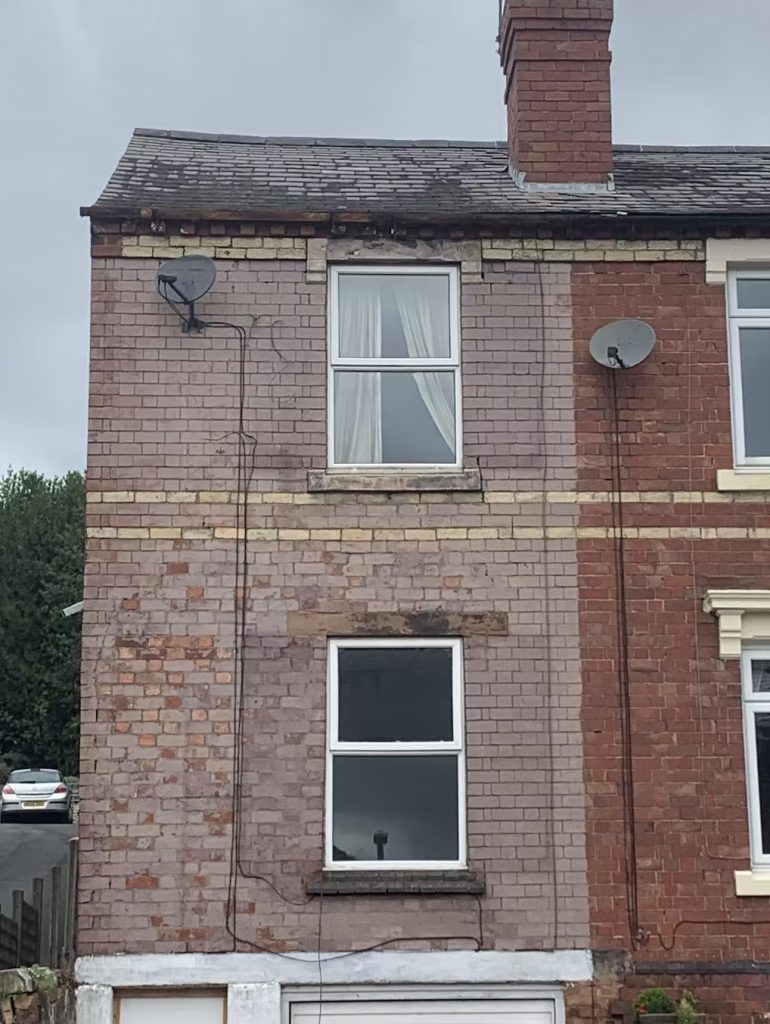
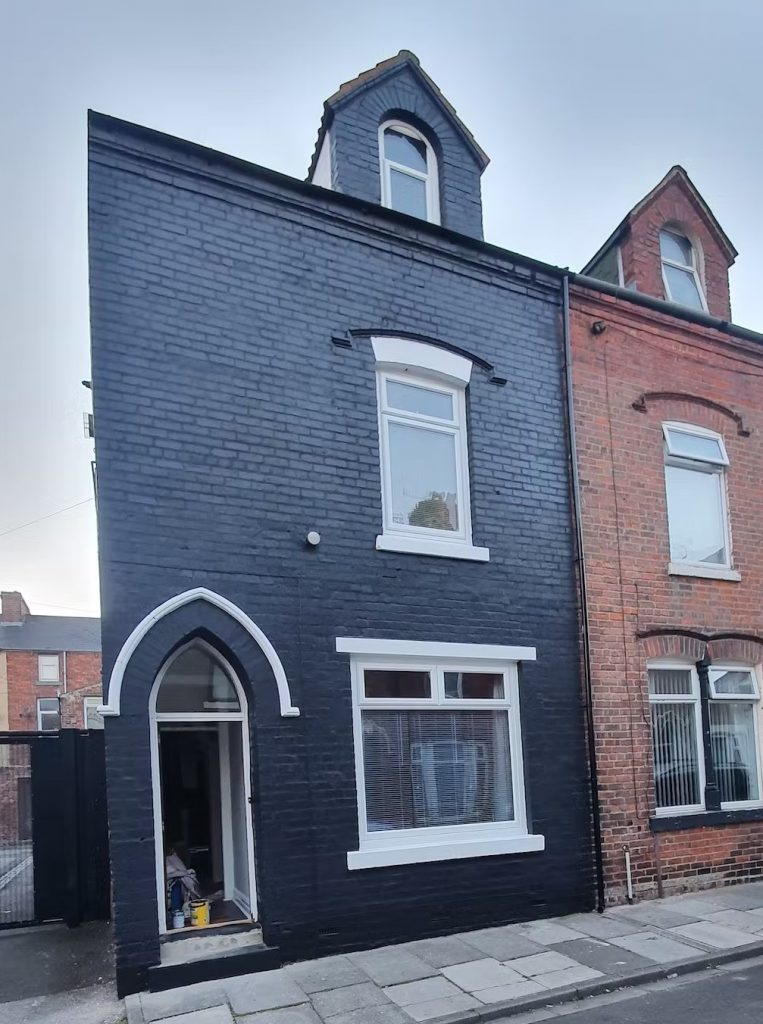
The UK’s Most Trusted Paint Supplier
Painting stone surfaces isn’t a painting job for the faint-hearted. However, if you do it well and use the right paint, the results speak for themselves.
We hope our blog has been helpful, please check out the rest of our blogs for more information and advice about a wide range of painting and decorating projects.
In the meantime, if you have any questions about us or our products or the best masonry paint to use, please get in touch.
We look forward to hearing from you.
FAQ's
Can I paint over old masonry paint?
As with any exterior painting project, you can paint over old masonry paint as long as the original layer isn’t cracked or peeling. If it is, you should use paint stripper or sandpaper to remove it.
Do you need to prime before masonry paint?
A layer of primer not only adds longevity to your masonry paint, but also helps it to cling to the surface. This keeps the colour bolder for longer, meaning you will have to repaint as soon. Without primer, your paint may look faded even when it has just dried.
Is it best to apply masonry paint with a brush or roller?
Masonry surfaces are often rough, meaning that a roller may not guarantee even coverage. A quality paint brush will help the masonry paint reach into dents and makes it easier to paint awkward corners and hard-to-reach areas.
Is masonry paint waterproof for concrete?
Masonry paints offer protection from wind and rain but aren’t designed to repel standing water. For flat surfaces like patio slabs with poor drainage, concrete or patio paint is better suited. Masonry paint should be used on vertical surfaces like walls.
What is masonry paint for?
Masonry paint is designed for outdoor surfaces such as brick, render, concrete, cement, plaster, pebbledash, lime, and stone. This makes it one of the most versatile paints, ideal for a range of outdoor painting projects.
What is the lifespan of masonry paint?
The number of years your masonry paint will last depends on its quality. Standard masonry paint lasts around 5 years, whereas the best compounds can look great for decades, especially when paired with a quality primer.
